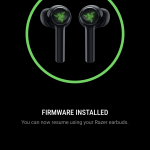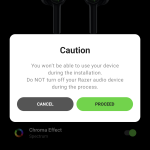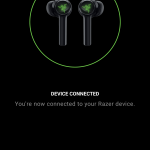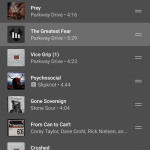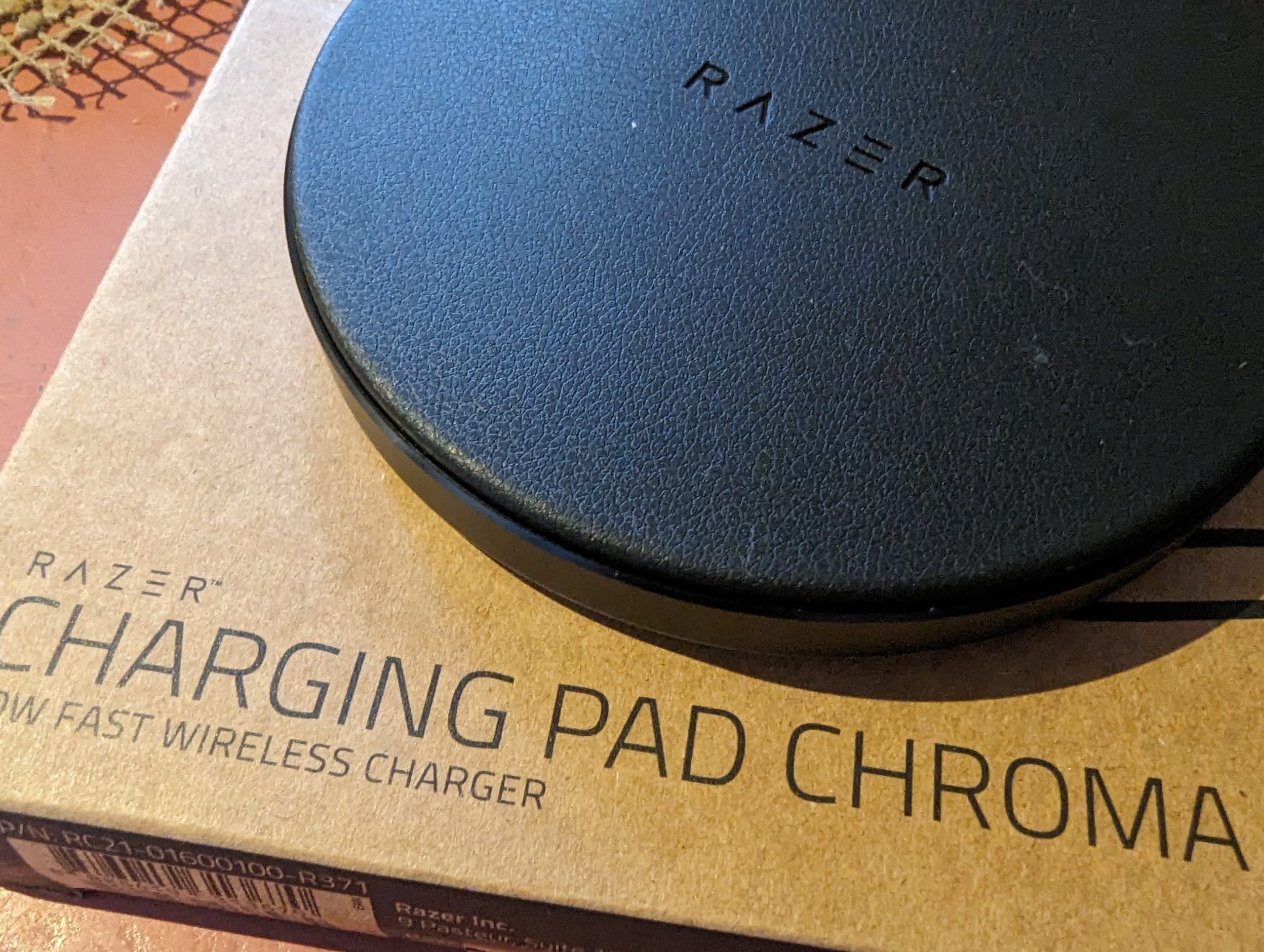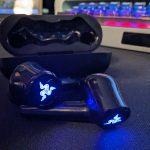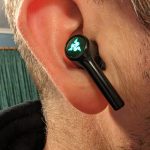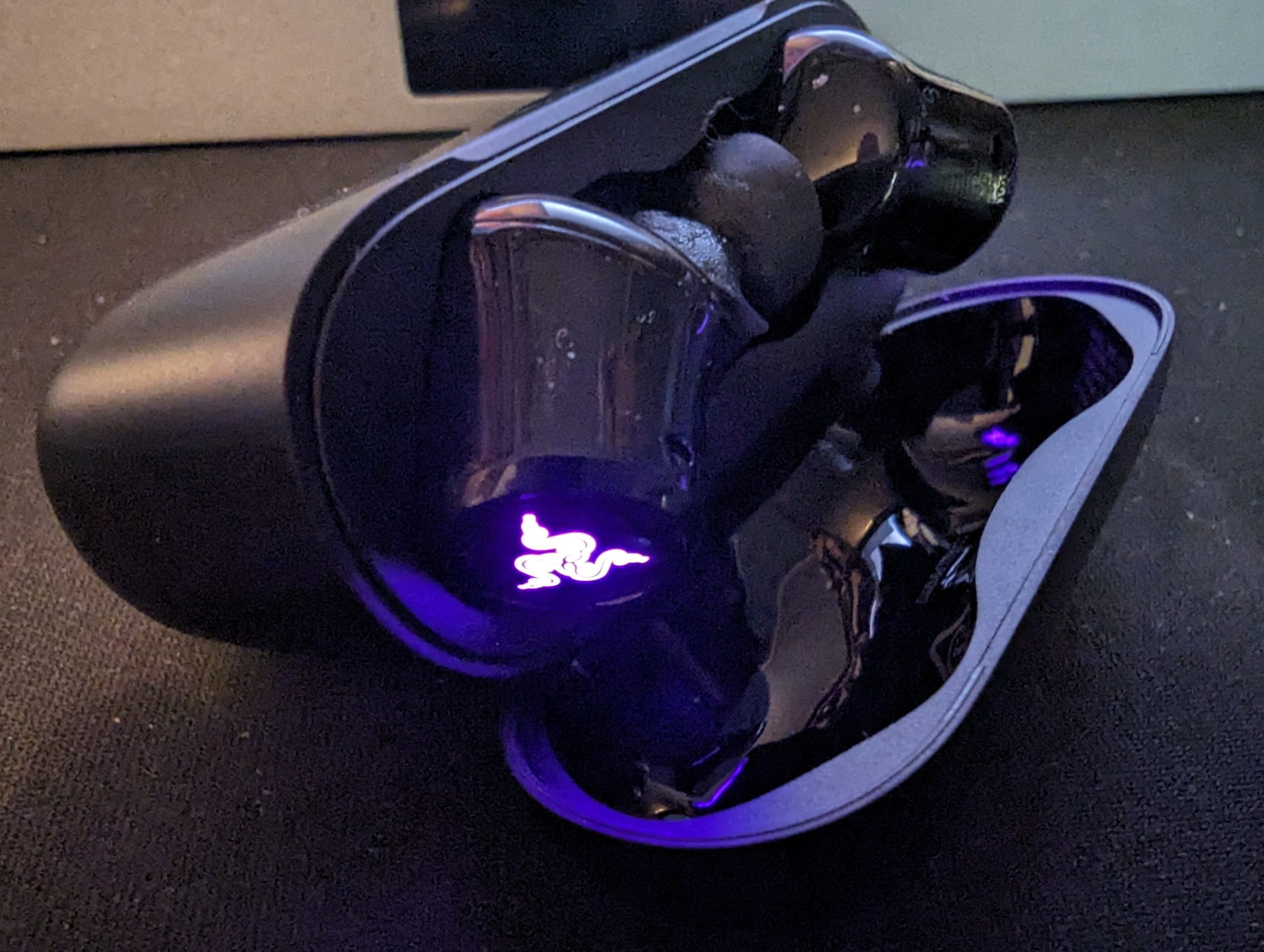For years as a teen, I longed for the right gear for performance, the look and the all-important brand. Razer was one of those brands, but unattainable on a casual wage, working 14 – 16 hours a week. As an adult working full time, I’m now in a spot where I can buy what I want to, and I’ve been looking for a good option for portability and compatibility when it comes to in-ear offerings for a while.
There are many really good offerings in the wireless earbud space at competitive pricing. I’ve found the differentiating factors between them are options for connectivity and fit. The sound side of things, of course, is there, but it’s a bit subjective and largely, you’ll get what you pay for.
The Razer Hammerhead Pro HyperSpeed offers everything I like in a set of earbuds while also delivering a solid sound experience.
Design, Fit and specs
One of the biggest issues I’ve had with wireless earbuds over time is the long-term comfort. This is usually due to either the weight of the earbuds or poor balance, making them uncomfortable to wear. If that is paired with a fit that isn’t quite right for my ears, even the greatest-sounding earbuds aren’t going to last long in my daily carry kit.
Despite how long the arms of the Hammerhead Pro are, the balance was pretty good. I’m very happy with how little they weigh (6g per earbud) and with the default tips; the fit is great. Even moving around the yard, going for a vigorous walk or exercising at the gym, they didn’t dislodge accidentally.
When you delve deeper into the specs, there’s plenty here to make them an interesting proposition to even fairly discerning buyers. The volume capabilities (95db SPL) are certainly higher than my ageing ears can deal with at full noise. This is thanks to the 10mm driver, which produces sound range from 20Hz to 20 kHz, impressive for something this small.
There’s ANC included, which is pretty nice if you’re using these during a commute or in a noisy office environment. While you can do that, what these are really for is gaming on the go and that’s evidenced by the substantial compatibility list, including PC, PlayStation, Nintendo Switch, Android, iOS, iPadOS and pretty much anything you can connect to via Bluetooth.
The case stores power ready to recharge your earbuds every time they’re not in use and need a charge. In theory, there’s a variety of use times (see the Razer site for a breakdown) from 14 hours — buds and case — with ANC and lighting turned on, up to 18.5 hours with both disabled.
So all of those boxes were ticked for me, and it was time to start testing.
Setup, daily use and the extra features
Setting up any Bluetooth device these days is really easy; turn it on, search for it on your target device and pair it. Now, you can leave it there if you want to, but Razer has a pretty nifty app to support the use of its audio equipment, and it’s very complementary.
What I like about the app is the simplicity of controls; you can alter the ANC settings as easily in the app as you can on the earbuds directly; you can alter the touch response and playback options and even alter the lighting on the earbuds. As has become the norm, they also have an in-ear sensor so if you pull an earbud out because someone has spoken to you, playback of whatever you’re enjoying will stop. I’ve found that this feature is remarkably accurate on these and hasn’t required me to manually stop or re-start playback during testing which has been very welcome.
This is only part of the setup and connectivity, though, as they also come with a USB-C dongle that you can plug into anything with a USB-C connector. For me, this included my laptops, table and a Nintendo Switch, and it’s as easy as plugging the dongle in and continuing to use the device as you normally would. Pairing the dongle isn’t necessary; it’s already paired and it just works.
This is by far the better option if you’re playing games purely because it’s lower latency connection. That’s not to say that the Bluetooth is bad or particularly laggy, but the dongle is slightly better and in some cases, that millisecond and the spatial awareness make a difference. Perhaps the most beautiful part of this, is that the dongle overrides Bluetooth, so you can pair it to a phone for daily music use, the plug the dongle in for gaming.
I liked the Wireless charging capabilities in the Hammerhead Pro HyperSpeed, particularly when coupled with the charging pad Razer has available. It’s (of course, it’s Razer) compatible with RGB to provide a visual indicator of the battery level of the attached device.
How do they go for sound?
I’ve never had a disappointing sound experience with any Razer equipment I’ve tested. It’s a premium brand and, honestly, given the price and experience I’ve had in the past – I expect high standards every time. Again, Razer has delivered a really solid sound experience, provided one of the ear tips fits you well.
Without that snug fit, the sound balance will be off, and you’ll miss out on bass because it’ll just leak out around the ill-fitting tips. The default tip fit me quite well, and I got a really solid and reasonably well-balanced audio experience — perhaps a little bass-heavy for my usual music listening — for most users.
That balance, as mentioned, is a bit bass-heavy but that’s fine for movies and excellent for gaming. The only time it was really noticeable was when I was listening to some music genres that are a bit more sensitive to poor balance. What really stood out for me was the clarity of the mid-range audio, which made watching streaming TV and movies a delight because that’s where vocal range resides.
This also meant that call clarity was outstanding, whether it was a video call for work purposes or phone call.
Battery: Your mileage may vary
Even a pretty heavy user is going to get a couple of days out of a single charge of the Hammerhead Pro HyperSpeed. In theory, you’re looking at a minimum of around 14 hours, as earlier mentioned, with the lighting and ANC turned on. I’m not listening to these at huge volume, but at about 1/3 of its capacity, I’m getting closer to 18 hours consistently, which is a good result.
I found it interesting that the “over-delivery” of the battery life didn’t carry in scale to turning off the lights, but ANC (naturally) made a pretty significant difference. On one power cycle, I managed to get just over 29 hours of listening time with no lights or ANC in use.
What could be better?
There’s so much to like here that it feels odd to be critical, but they’re not perfect. As a starting point, the touch controls are hit-and-miss. I’ve found that they are good and reliable if you’re very deliberate about the trigger, but if you’re trying to adjust the volume quickly – you’re likely to stop playback or change your ANC settings. It’s frustrating that these aren’t more accurate and responsive.
Other issues are a bit subjective and absolutely me being super picky about what I want from a device. The USB-C dongle is a bit of a risk if you take it out of your house. It’s small, it’s lightweight and very easy to misplace. I’d happily sacrifice a bit of space to have a way of docking the dongle in the case to minimise that risk.
The battery life isn’t horrible, but if you make the case slightly larger to accommodate a dock, there’s probably space to sneak a little bit of extra battery in too. The battery capacity meant that when I wasn’t using these, they were back in the case charging and I was charging the case every two days to ensure I had power when I wanted it.
Who should buy the Razer Hammerhead Pro HyperSpeed?
Like a lot of Razer equipment, I feel as though these are targeted as a bit of a niche market. The combination of the USB-C dongle and the Bluetooth connection, with the former overriding the Bluetooth, really does show that these are targeted at someone who is gaming on the go.
That aside, the price will be a huge roadblock for many people; at AU$369.95, they’re really expensive earbuds!
They’re lightweight, well-balanced and comfortable to wear for significant chunks of time. The carry case has enough charge to get you through a day, perhaps two, between charges, and the app is useful as part of your initial setup.
Unless you’re going to be doing some mobile gaming on the regular, there are cheaper options out there that cost less and have the same features and potentially (aside from the USB-C dongle) better connectivity. But I’d happily tell anyone who is mobile gaming as part of their regular pass times about these and that the price is worth it!


